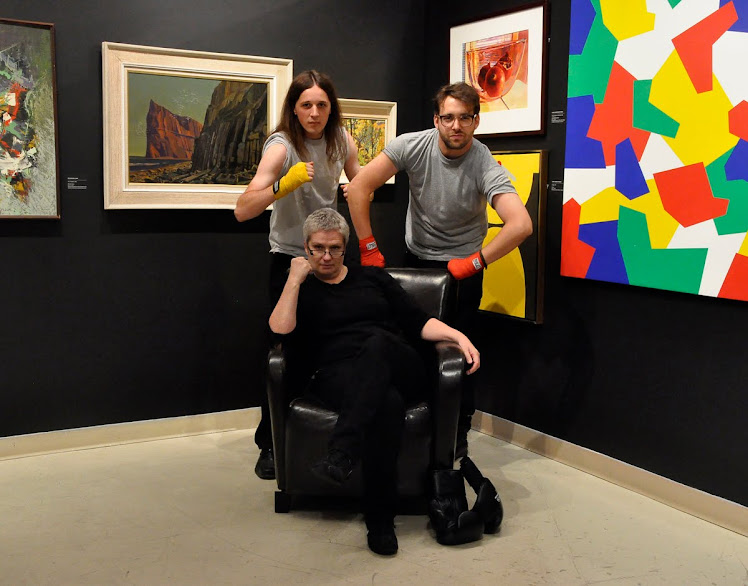 Being the First to draw from a rack, there were, both paintings and framed prints to choose from, while Cam hesitated to choose the first work that engaged him, upon research it seemed to fit best. This was a painting by Tony Tascona entitled Quarter Cycle, 1968.
Being the First to draw from a rack, there were, both paintings and framed prints to choose from, while Cam hesitated to choose the first work that engaged him, upon research it seemed to fit best. This was a painting by Tony Tascona entitled Quarter Cycle, 1968. Tony Tascona was born in St. Boniface, Manitoba in 1926, and later studied at the Winnipeg School of Art as well as the University of Manitoba School of Fine Arts. His style, like that of Hugh Mackenzie, was informed by technique. Tascona worked as a metal processing technician for Air Canada, which began his attraction to industrial materials and process. Similarly Mackenzie worked as a technical artist working on the Avro Arrow, which informed his style on the side of his practice of depicting industrial themes. For both, technique is of the utmost importance, as their practice is heavily involved with the investigations of process.
Tascona's work developed into what we see in Quarter Cycle, only after his short stay in Montreal where he discovered an affinity to Neo-Plasticien artists such as Guido Molinari. Upon his return to Winnipeg, Tascona's work gradually surprised the textural, and like Darryn's first choice by Don Harvey entitled Off Centre,1966, started to deal with surface. It was not important to Tascona to represent anything, nor to inspire anything specific in the viewer; he wished his images to be seen as an "absolute shape". "With my paintings, I take a thought and make it into a physical reality. And if you want to add the metaphysical, that's your business. But I really feel this type of art doesn't have to be explained. It just has to be looked at and discovered." (Quoted by Patrick Flynn, "To Live Off Art is Not Easy," Winnipeg Tribrune, 4 October 1975)
There seems to be a lot of ties to the Up Close and Personal exhibits the Gallery has been doing over the past year. The influence of Molinari, who's Quantificateur, is showing now in Up Close and Personal III, but also that of the influence, of one's instructor, as Tascona studied under Joe Plaskett, whose Table at night was shown in the Up Close and Personal II Exhibition. Though, neither of these examples truly illustrates these influences as Plaskett's would have informed Tascona's earlier work, and Molinari's was created decades after his work would have influenced Tascona.
The curators discussed how these works related to each other within the collection, and whether there had been some intension in building a collection this way. It was considered that these coincidences might emerge out of Canadian art history because of its relatively small scope, and that rather than a tactical collecting mandate; our past has, luckily, been fortunate. It seems more likely that, similar to our acquisitions of group of seven works, we have been lucky enough in the past to purchase some contemporary work, affordably, in small steps, gaining examples of these artists. By no means is the collection developed enough to celebrate one artist's whole practice, but in their selected works from specific periods, the relations to each other could offer an exciting exhibition of the sentiment in different Canadian art movements.

No comments:
Post a Comment